Draft proposal for history information panelsThis is the fourth of five panels.
|
Draft proposal for history information panelsThis is the fourth of five panels.
|
The Railway YearsFrom the 1830s railways were the rage and many canals died as a result of the railways' success. But unlike some rural canals, the Regent's Canal continued to thrive since it served the Port of London, up until the 1960s when the old docks closed. The outlook became particularly bad with the opening of the London and Birmingham Railway in 1837-1838 which took much long distance traffic away from the canal and in 1837 London's first mainland railway station was opened at Euston. For a while the two transport systems worked side by side and many of the building materials for the new north London rail termini were carried by canal. But canal companies had to reduce their tolls and profits, and strengthened the boat fleets in a valiant attempt to compete, but continued to lose trade to the railways. It became clear that railways were more versatile and the Regent's Canal Company considered schemes in 1845 and 1846 and again in later years to convert the entire canal into a railway, but without success. However, the main stay of the canals in London proved to be substantial local traffic, based heavily on the River Thames and the Docks, while the Regent's Canal also found a new role in distributing goods [that arrived in London by rail?]. |
Railway Bridge at Camden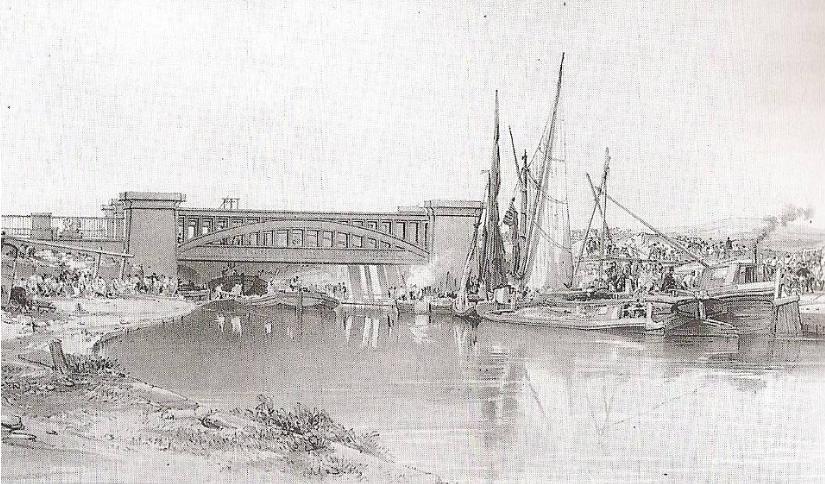
|
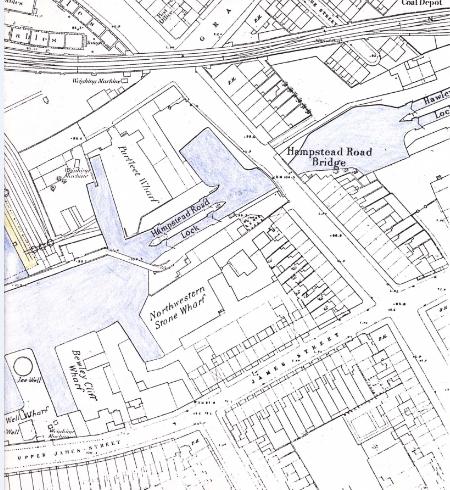
|
Map of Camden Town, 1871, showing railway and canal intersection. |
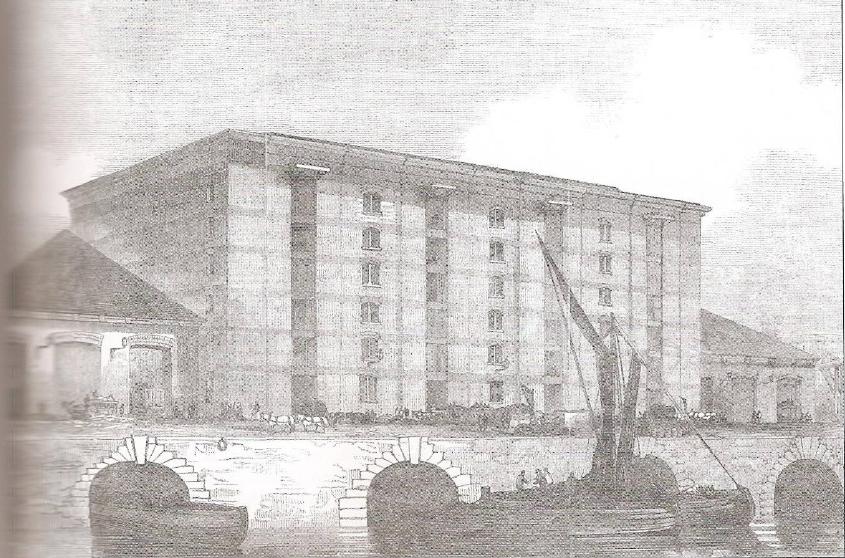
|
The Great Northern Railway's granary warehouse and basin that opened in 1851. The two centre arches allowed allowed canal craft to access the main warehouse whilst those on the left and right served transit sheds, one handling incoming and the other out-going traffic.
|
|
Inside one of the Great Northern Railway's transit sheds showing goods being exchanged between railway wagons and
canal craft. (From Illustrated London News, 28th May 1853)
|
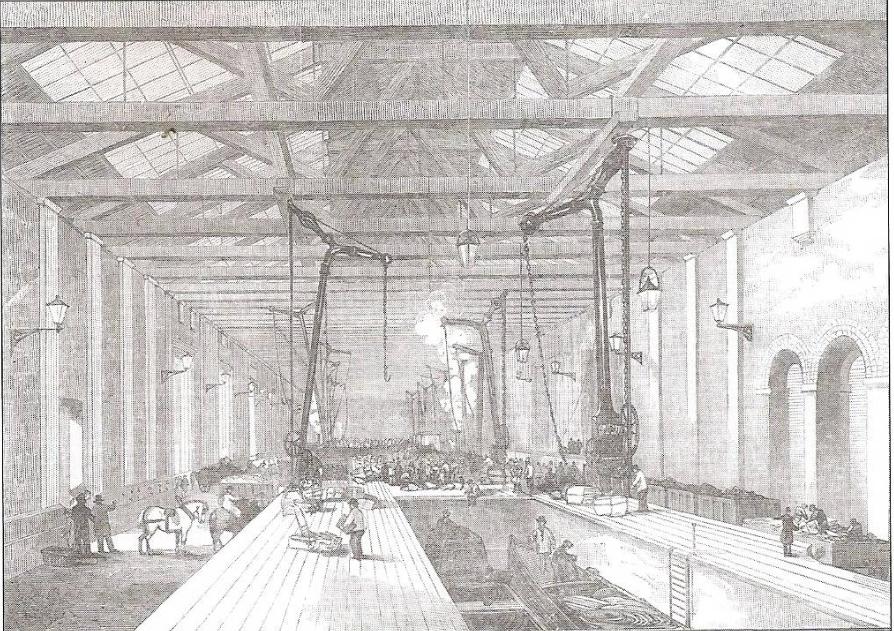
|
MACCLESFIELD BRIDGE EXPLOSIONRailways were reluctant to carry explosives, so gunpowder was carried extensively by water, both for military purposes and for civilian uses, such as quarrying. One of the most notable incidents in the history of the Regent's Canal occurred in October 1874 when a narrowboat named the Tilbury blew up under Macclesfield Bridge. It was one of five boats being puilled by a tug and it had been carrying gunpowder in loose bags and petroleum in barrels. The force of the explosion destroyed the bridge, killed three men and a horse and caused much damage by sending debris in all directions. The bridge had been opened in 1816 and was named after the Regent's Canal Company chairman, The Earl of Macclesfield. It was the finest bridge on the canal, standing on fluted iron columns cast by the Coalbrookdale Company in Shropshire. The bridge was rebuilt to the same design and is known to this day as 'Blow up Bridge'. The explosion accelerated the passing of the Explosives Act in 1875, to regulate the manufacture and carriage of these dangerous substances. 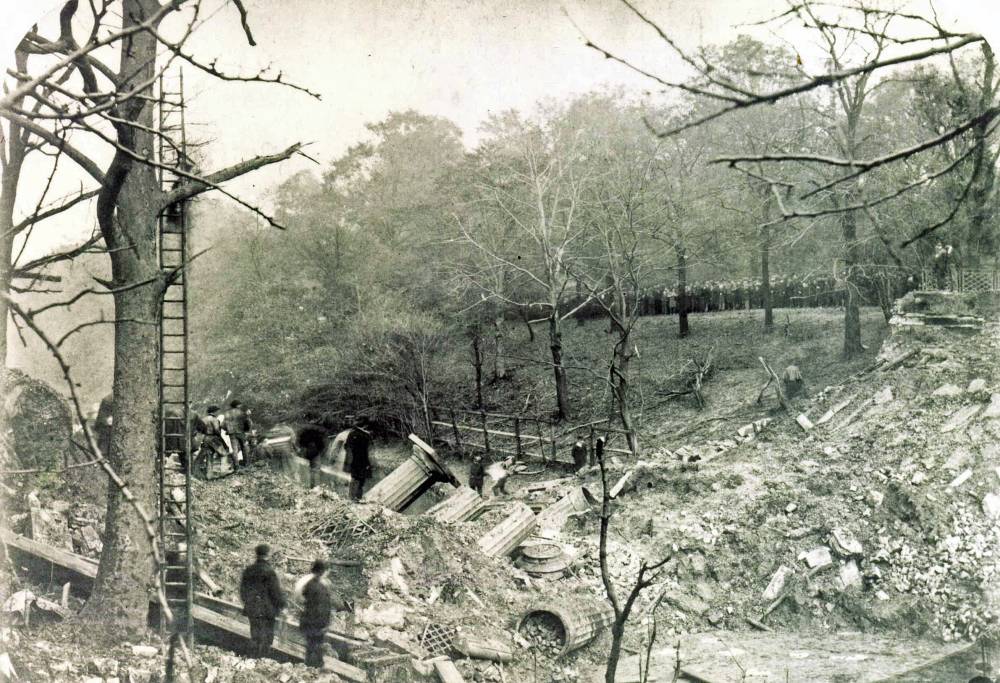
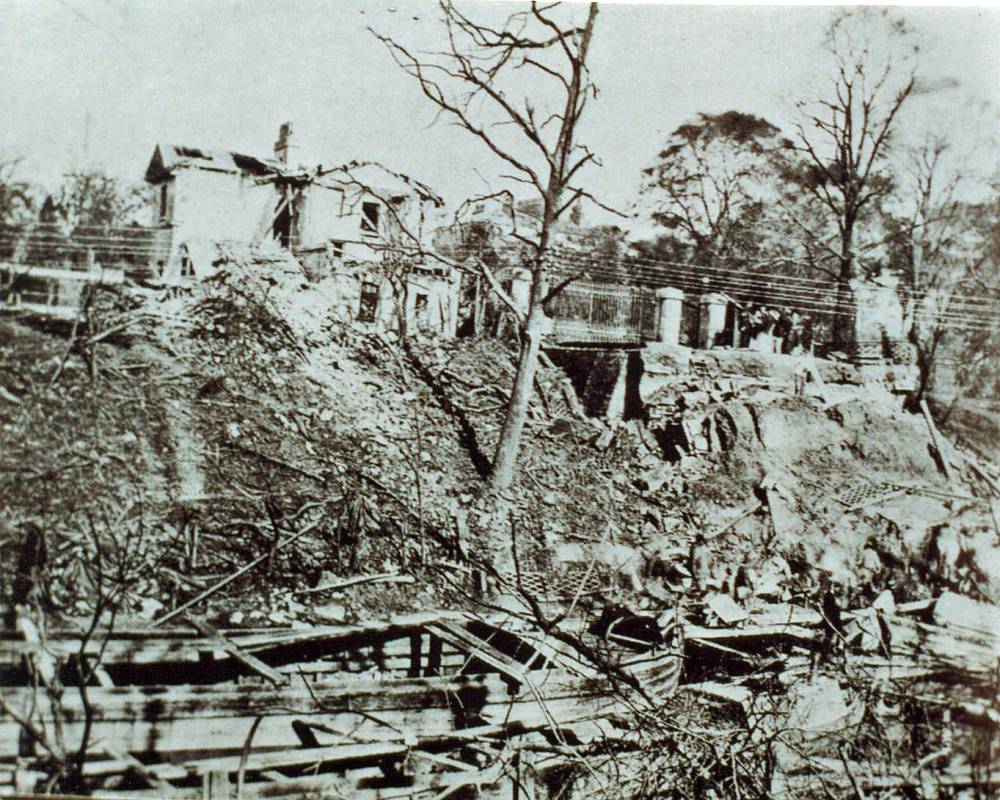
|
Twentieth Century |
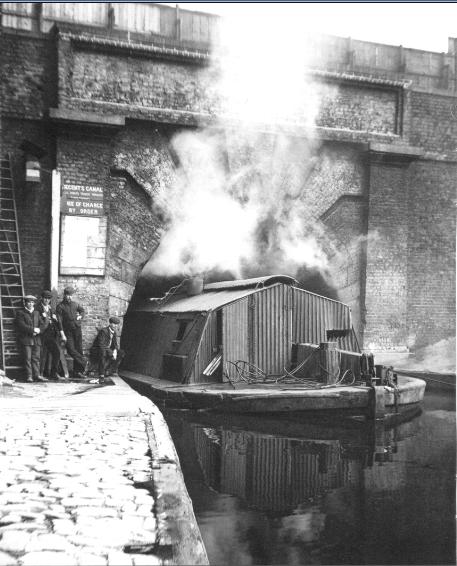
|
Tunnel tug boat at Western portal of Islington Tunnel, 1905. |
| Camley Street - Plimpsole Coal Drops |
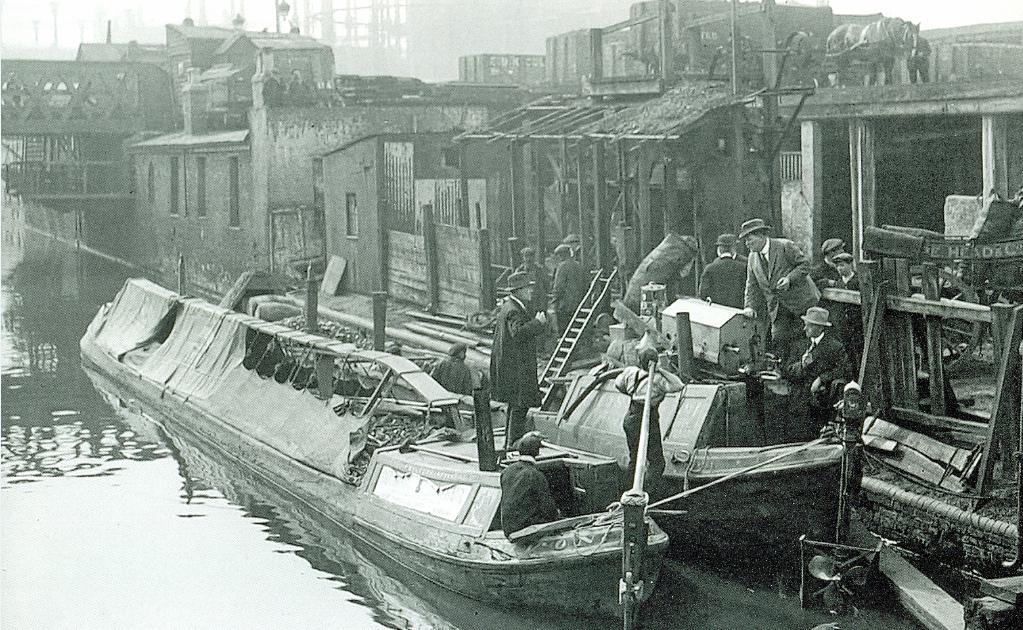
|
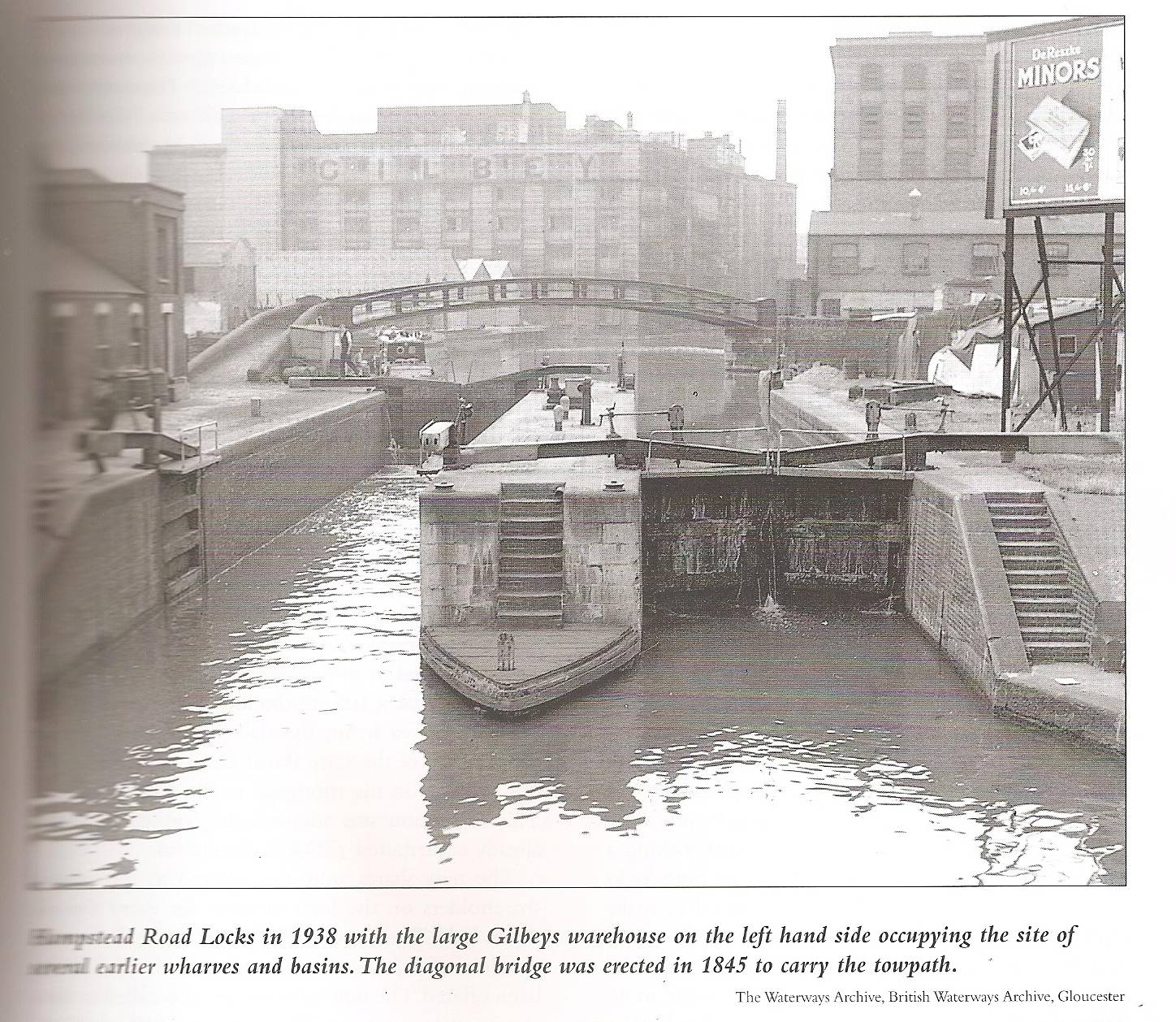
|
Hampstead Road Locks 1938 |
Walkers Purfleet Wharf 1911 |
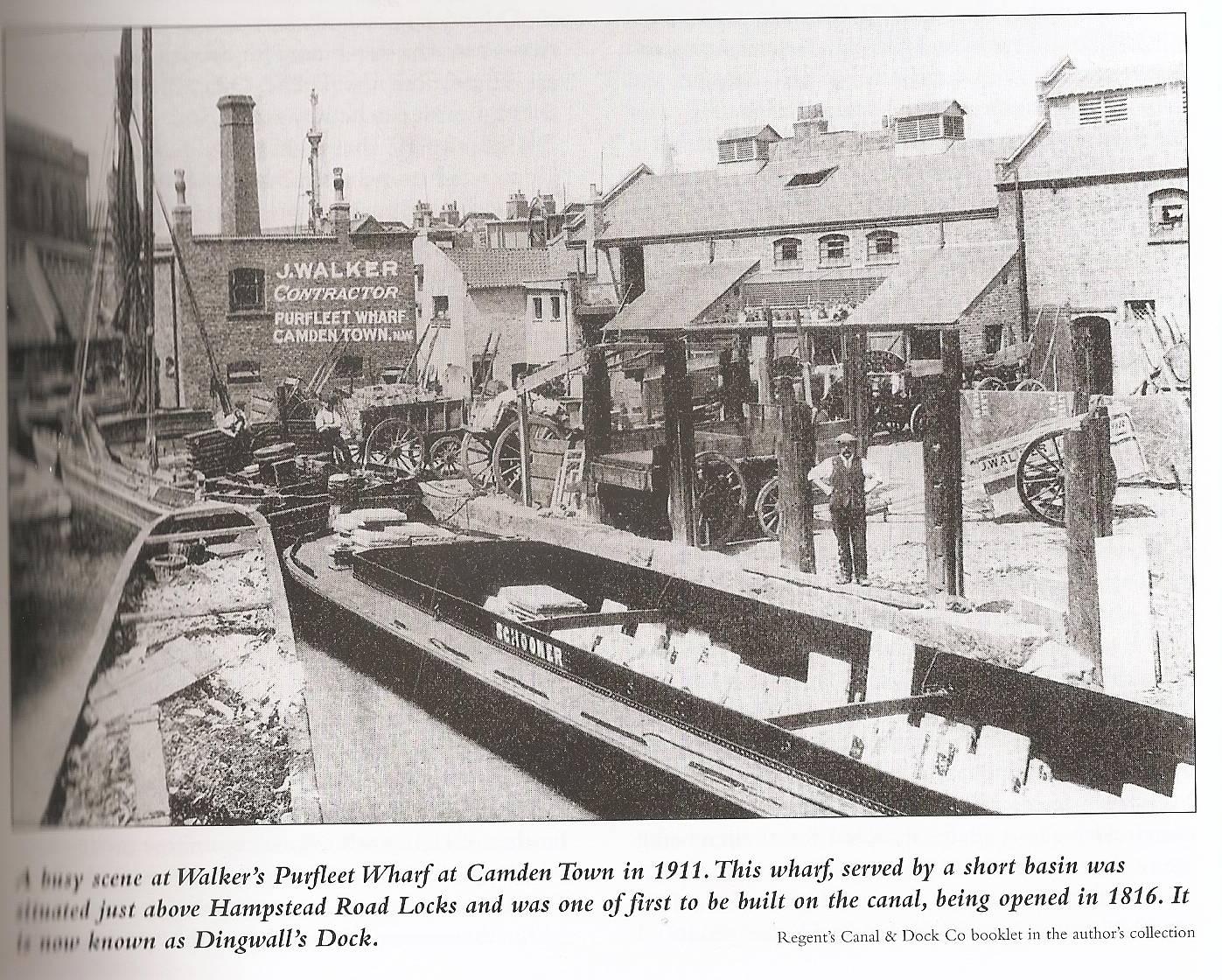
|
|
In the late 1920's talks took place between the Regent's Canal, the Grand Junction Canal, and the Warwick Canals, resulting, in 1929, in a merger between them. The Regent's Canal Company bought the canal assets of the other two parties and the new enlarged undertaking was renamed as the Grand Union Canal Company. In the latter part of the second world war (1939-45) traffic increased on the canal system as an alternative to the hard pressed railways. Stop gates were installed near King's Cross to limit flooding of the railway tunnel below, in the event that the canal was breached by German bombs. |